
At Fresh Oranges Home Delivery we only sell oranges and mandarins chosen according to quality criteria and optimum ripeness.
We value flavour and quantity of juice above all other characteristics. We do not calibrate oranges or mandarins, nor do we differentiate between juice oranges and table oranges. We send them to you as soon as they are picked from the tree. Only damaged or very small oranges are discarded. All oranges, large and small, are of the same quality and you can use them as you wish at any given moment.
We do not reject fruit with aesthetic defects as long as we consider that they do not affect its flavour or durability. This is one of the aspects that are taken into consideration during the selection process (more information on “Ugly oranges”). This does not contradict the fact that, on most occasions, when opening a box, you will find all or most of the oranges are beautiful.
Naturally, at the beginning of the harvest in each orchard, the fruit has a higher acidity, and as the days go by, it becomes less acidic. Something similar, but in reverse, occurs with the amount of sugar. There are citrus varieties, such as the Navelina orange, whose harvesting period can last up to three months. Depending on various factors such as the "foot" of the tree or the geographical location (altitude or distance from the sea, for example), we can find green and ripe oranges at the same time in different orchards. In this sense, our town, Cullera, has some exceptional peculiarities, as it has sea, river and mountains, ecosystems that entail different types of soil and microclimates that give different orchards different stages of ripening. This is a very important part of our work: to select the appropriate orchard at each moment, that is to say, the one whose oranges have the desired ripening point.
On the other hand, the periods of ripening and optimal consumption are specific to each variety and may vary considerably in different years, depending mainly on the weather. Regarding the duration of oranges after harvesting, all our varieties have long periods of good or very good conservation, although it must be taken into account that, as with all fruits, if they are riper, the conservation period can be slightly reduced (although in oranges this effect is less pronounced than in other fruits).
At Fresh Oranges Home Delivery we start serving a variety when it has a satisfactory combination of acidity, flavour and quantity of juice. Obviously, this assessment corresponds to our criteria. In this sense, our customers can adapt their demand according to their tastes. The decision on when to end the season of a variety is taken when we detect that the flavour or the quantity of juice of a significant part of the oranges no longer meets our quality expectations.
All the above considerations apply to both conventional and organic oranges.

The harvesting calendar for the current season is shown below. Please bear in mind that the dates are approximate, as the date when harvesting begins for each variety depends on the degree of ripening reached, and may vary considerably from one year to the next.
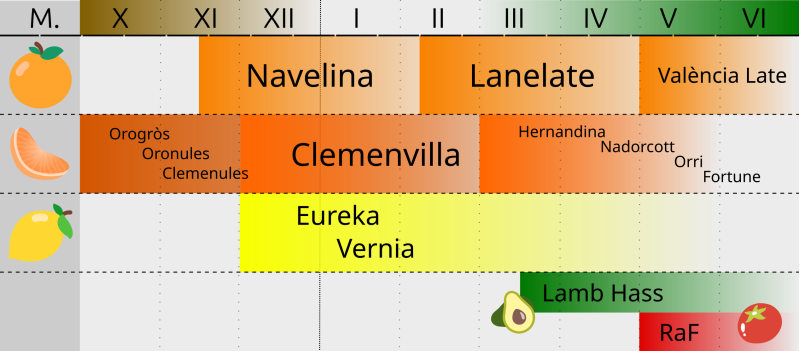
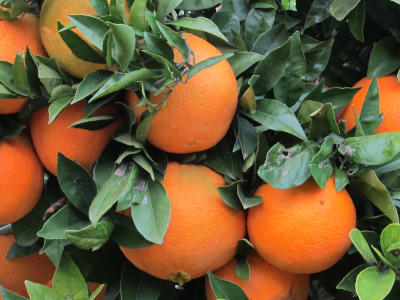
Orange Navelina
The Navelina is an early orange of the Navel family, large in size and with a sometimes very apparent navel. Its skin is slightly rough and its colour can vary from yellowish orange to bright orange. It has a very juicy pulp, seedless, of excellent flavour and very sweet, being suitable for both juice and table orange.
It keeps in good condition for 20 to 30 days after harvesting if stored in a cool, dry place away from direct sunlight.
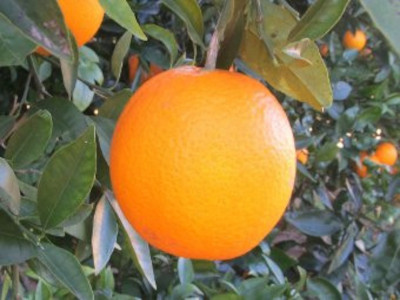
Orange Lanelate
Also known as Navel-Lane. Late orange of the Navel family, of medium size and rounded shape, smooth, thin skin and yellowish orange colour. Its navel is more discreet than that of other Navel varieties. With an excellent and very sweet flavour, it produces a large quantity of juice and is seedless, being suitable for both juice and table oranges.
It has a long post-harvest shelf life of up to 30 days, or even longer, if stored in a cool, dry place away from direct sunlight.
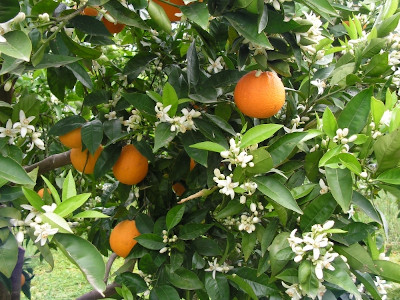
Orange València-Late
This is the latest variety of orange produced in Valencia and possibly the most widespread worldwide. It belongs to the white orange family. Medium or small size, flattened shape, smooth skin of little thickness and pale orange colour. Unlike the Navel family, it has no navel. It is a very juicy and sweet orange, with a higher degree of acidity than the Lanelate and a very good flavour. Some seeds may be present. It produces a large quantity of juice, although it can also be eaten as a table orange. The flesh of these oranges is strong and compact.
It has a long post-harvest shelf life of up to 30 days, or even longer, if stored in a cool, dry place away from direct sunlight.
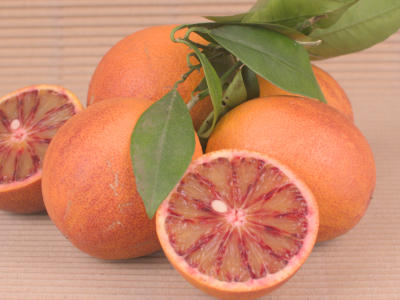
Orange Sanguinelli
The red or blood orange is a variety of orange with pulp with dark red spots, whose juice has a colour similar to raspberry. The degree of this colouration depends mainly on strong temperature changes between day and night. The dark red colour of its pulp is due to the presence of anthocyanins, which are pigments with antioxidant properties common in many flowers and fruits although rare in citrus fruits.
It is round in shape, medium or small in size, smooth skin of little thickness and orange colour with red spots. It is a very juicy orange, with a higher degree of acidity than the Lanelate and a delicious special flavour. It may have some seeds. It produces a large quantity of juice, although it can also be eaten as a table orange. The pulp of these oranges is strong and compact.
It has a long post-harvest shelf life of up to 30 days, or even longer, if stored in a cool, dry place away from direct sunlight.
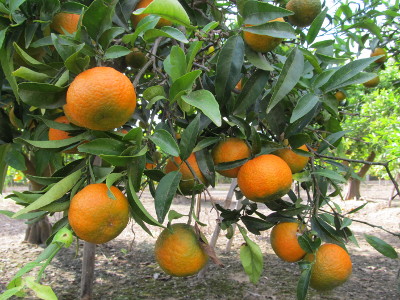
Clemenrubí and Oronules
Clemenrubí and Oronules are the earliest of the Clementine family. They are medium-sized and deep orange in colour, although they usually have greenish areas on the peel when ripe. Their pulp is fine and of excellent flavour, which is why they are considered to be very good quality mandarins. Their juice is also excellent. Their skin is soft and slightly thick, so they are easy to peel and can also be easily separated into juicy segments, making them ideal for children. The Clemenrubí is a variant of the Oronules that ripens 2 to 3 weeks earlier. Like most mandarins, it may have a few seeds due to cross-pollination.
Keeps well for up to 20 days after harvesting in a cool, dry place away from sunlight.
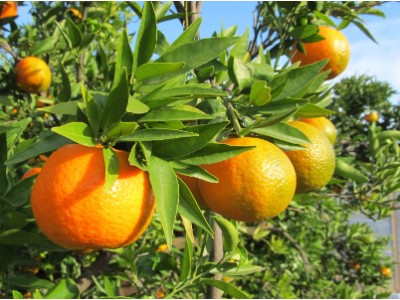
Esbal (Clementine Fina)
The classic Clementina, of medium size and intense orange colour. Although in recent years it has been replaced by new varieties of the Clementina family, it is still one of the best in many respects. It has a very fine flesh with an excellent flavour, very juicy and very sweet. Its juice is also excellent. Its skin is soft and easy to peel, making it ideal for children. Esbal is a variant with identical characteristics and flavour, which ripens about three weeks earlier. Like most mandarins, it may have a few seeds due to cross-pollination.
Keeps well for up to 20 days after harvesting in a cool, dry place away from sunlight.
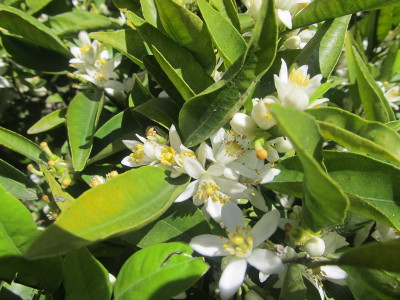
Clementine Clemenules
Clementine of medium-large size and slightly flattened shape. It has a fine flesh with an excellent flavour, juicy and sweet. Its skin is soft and easy to peel, making it ideal for children. Intense orange in colour, it can have greenish tints even when fully ripe. Like most mandarins, it may have a few seeds due to cross-pollination.
Keeps well for up to 20 days after harvesting in a cool, dry place away from sunlight.
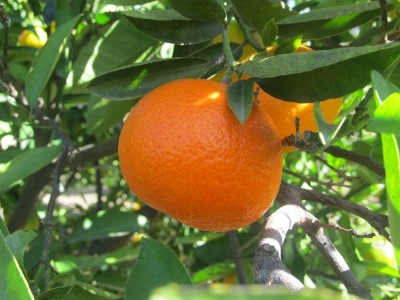
Mandarine Clemenvilla
Also known as Nova mandarin. Its average size is larger than that of most mandarins and at the same volume it also weighs more. Its skin is smooth and shiny, thin and its colour is deep orange to reddish. It is considered by many to be the delicacy of mandarins because of its extraordinary taste, fine flesh and large amount of juice, although it does not peel as easily as other mandarins. Like most mandarins, it may have a few seeds due to cross-pollination. It is a fantastic table mandarin, although it has a lot of juice and can also be used for this purpose.
Once harvested, it keeps better and longer than other mandarins, up to 20 or 30 days in a cool, dry place away from direct sunlight.
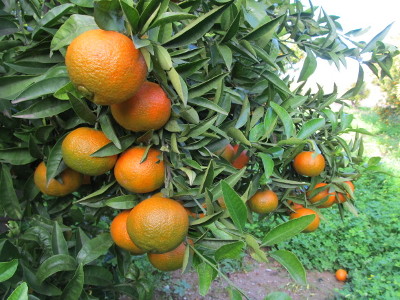
Clementine Hernandina
It is a late mandarin from the Clementine family. It has a medium size and an intense orange colour, although a typical characteristic of this variety is that, when fully ripe, it can preserve a greenish area in the basal part, variable in extension and intensity. It has a fine flesh with an excellent flavour, very juicy and very sweet. It is easy to peel and, as with most mandarins, it may have a few seeds due to cross-pollination.
Keeps well for up to 20 days after harvesting in a cool, dry place away from sunlight.
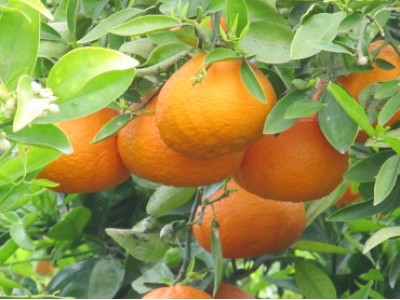
Mandarine Fortune
It is a late ripening mandarin. Its size can range from medium to large, and it has an intense orange colour. The pulp is fine, with a high juice content and a sweet and slightly acid taste. The rind, although very close to the flesh, is easily peeled. Like most mandarins, it may have a few seeds due to cross-pollination.
Keeps well for up to 20 days after harvesting in a cool, dry place away from sunlight.
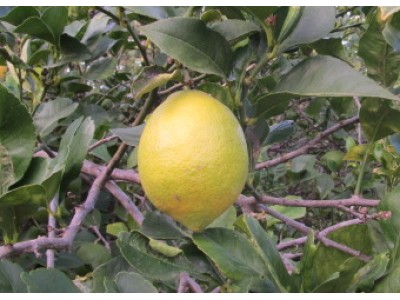
Eureka and Vernia
We serve lemons of the Eureka and Vernia varieties. These varieties have few differences between them, sometimes lemons of different varieties are more similar than lemons of the same variety. They are of medium or small size. They are spherical or oval in shape with a short nipple and a smooth, thin rind. The flesh is juicy with a high juice content.
They have a long post-harvest shelf life of about 30 days, or even longer if stored in a cool, dry place away from direct sunlight.

Application of plant protection products
We offer two types of citrus fruits depending on the type of crop they are grown in:
• Conventionally grown oranges: They comply with EUREP regulations in relation to the type of products applied to them on the tree. This regulation establishes measures for
- environmental protection and proper treatment of foodstuffs,
- avoidance of artificial fertilisers and other chemical or harmful substances to a large extent, and
- the reduction of pesticide use and, if possible, its total elimination.
• Organic oranges and oranges in organic conversion, both with official European and Spanish certification respectively.
In none of them is any post-harvest treatment carried out.
For more information see our blog entry on citrus fruit treatment
Presentation formats
You can buy in recyclable cardboard boxes in different formats:
- Box of oranges: 10, 15 and 20 kg.
- Box of mandarins: 10, 15 and 20 kg.
- Mixed box: Choose the combination of oranges and mandarins of 10, 15 and 20 kg.
- Gift box: Send a very tasty gift to whomever you wish. We will include a card with the text of your choice. The ideal gift also for the employees of your company.
Our organic farming project
In 2016 we started a project to transform part of our crops into organic. We invite you to learn more about this initiative by visiting the link Our organic farming project.